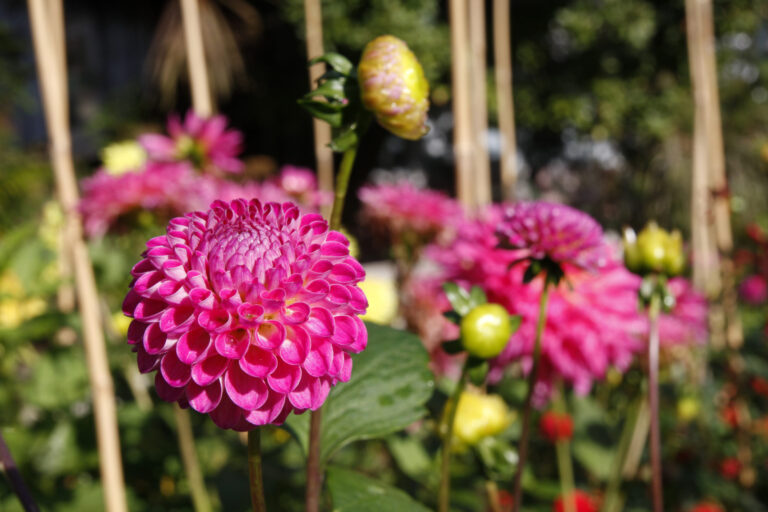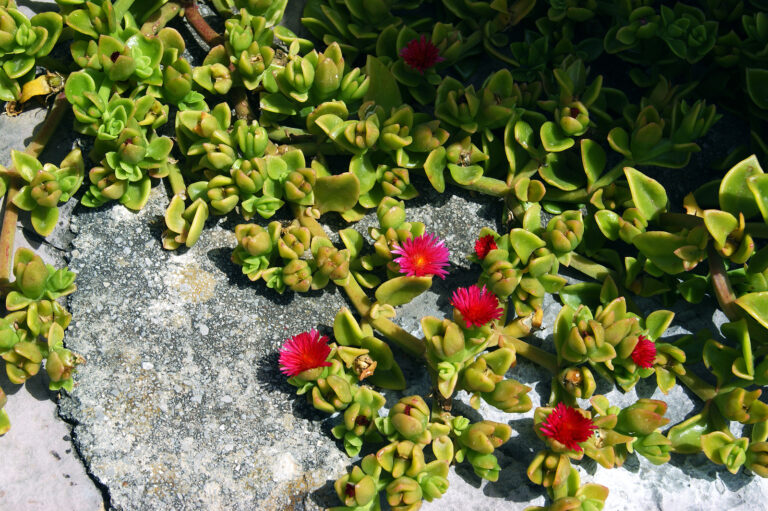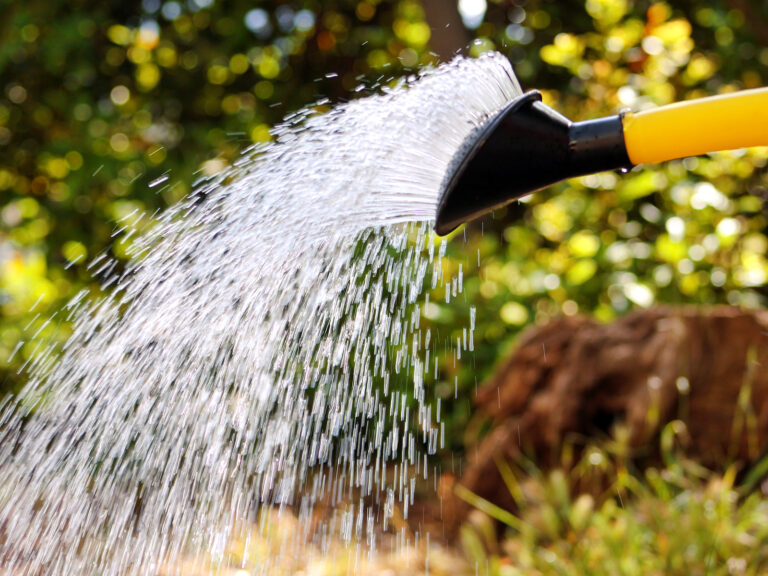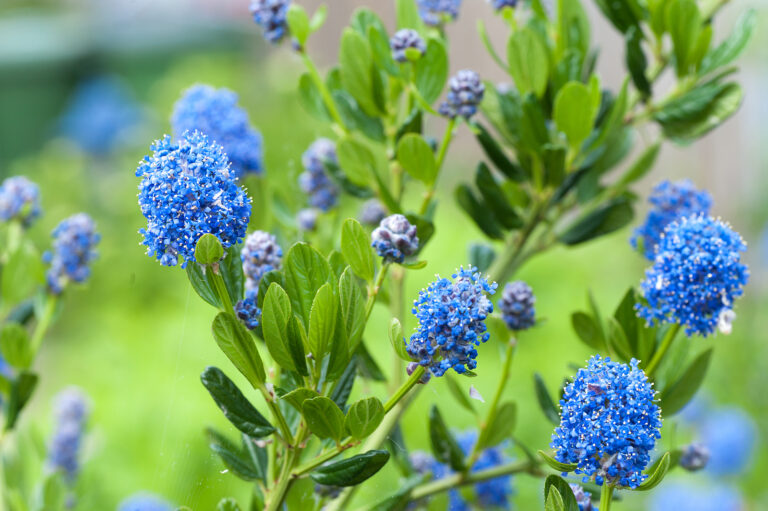The Best Companion Plants for Artichokes (and What to Avoid)
Artichokes are bold, architectural plants that dominate the space around them. After growing artichokes for years in my Sonoma Valley garden—both in wide beds using the NEW method and in smaller raised beds—I’ve learned that companion planting with artichokes is less about close interplanting and more about choosing the right neighbors. Since artichokes spread three to four feet and cast dense shade, smart companions should either benefit from their presence or avoid competing with their size and nutrient needs.
Here is a practical guide based on real-world experience: the best companion plant, additional good options, and which plants to keep at a distance.
The Best Companion Plant for Artichokes: Borage
If I had to choose just one companion plant for artichokes, it would be borage.
Why Borage Works So Well
1. Attracts pollinators.
Artichokes don’t need heavy pollination to produce edible buds, but once buds open into purple flowers, bees flock to them. Borage brings pollinators even earlier in the season, boosting biodiversity and activity around the artichoke patch.
2. Improves soil conditions.
Borage is often considered a soil builder. It mines nutrients from deeper layers and returns them to the soil as its lush foliage breaks down.
3. Leaves make excellent mulch.
A favorite technique of mine is cutting borage back midseason and using the nutrient-rich leaves as mulch around my artichokes.
4. Compatible growth habit.
Borage grows on the edges of artichoke rows without competing for root space or light.
Other Good Companion Plants for Artichokes
While borage is the standout, several plants play well with artichokes when given proper spacing.
1. Herbs
- Thyme – stays low, tolerates dry edges, and attracts beneficial insects
- Sage – thrives in similar Mediterranean-like conditions
- Coriander/cilantro – grows cool and quick, finishing early before artichokes expand
In my garden, thyme is especially useful as a living mulch that suppresses weeds without interfering with artichoke roots.
2. Flowers
- Marigolds – help deter soil pests and attract beneficial insects
- Yarrow – draws beneficial insects and stands up well to artichoke shade
- Nasturtiums – ramble around the base and attract aphids away from artichokes
I often tuck marigolds at the ends of artichoke rows—easy to reach, easy to deadhead.
3. Cover Crops
Good for off-season planting around or before artichokes:
- Fava beans (fix nitrogen and have deep roots that open soil)
- Crimson clover (for weed suppression and nitrogen fixing)
Favas have been especially effective in my raised bed rotations, leaving the soil friable and rich before transplanting artichokes in early spring.
What Not to Plant Near Artichokes
Some plants simply do not pair well with artichokes due to their size, nutrient demands, or light needs.
1. Root Crops
Avoid planting:
- Carrots
- Beets
- Radishes
- Parsnips
Artichokes shade the soil and compete heavily with root crops, leading to misshapen or stunted roots. In my experience, root crops perform best far from artichoke beds.
2. Heavy Feeders
Keep these nutrient-demanding crops away:
- Broccoli
- Cauliflower
- Cabbage
- Corn
Artichokes already require rich soil; pairing them with other heavy feeders results in uneven growth and smaller buds.
3. Moisture-Loving Greens
Avoid:
- Lettuce
- Spinach
- Arugula
These greens bolt quickly in the warm, dry conditions that artichokes prefer, and artichoke shade leads to elongated, weak growth.
4. Nightshades
Tomatoes, peppers, and eggplants dislike the cool soil conditions that artichokes favor early in the season. They also compete for nutrients and light.
I’ve tested tomatoes near artichokes more than once—each time, the tomatoes lagged behind and produced poorly.
Final Thoughts
Artichokes thrive when surrounded by plants that complement—rather than compete with—their large size, deep roots, and nutrient needs. Borage stands out as the single best companion plant, improving soil, attracting pollinators, and staying out of the artichoke’s way. With thoughtful spacing and smart choices, artichoke beds can support beneficial insects and overall garden health without sacrificing bud quality or yield.
Artichoke Learning Hub
Start here: How to Plant and Grow Artichokes: A Complete Guide – Full overview combining planting, care, and tips.
1. Planning and Varieties
- Best Artichoke Varieties for Home Gardeners – Choose the right variety for your climate and garden space.
- The Best Growing Conditions for Artichokes: Climate, Soil, and Sun Requirements – Understand the ideal environment for strong growth.
- The Best Companion Plants for Artichokes – Maximize productivity and garden health through smart plant pairings.
2. Starting Artichokes
- How to Start Artichokes From Seed: Indoor Sowing, Transplanting, and Timing – Begin your artichokes indoors for an early start.
- How to Plant Artichokes the Right Way: Soil Prep, Spacing, and Transplant Tips – Ensure proper planting for vigorous growth.
- When to Plant Artichokes in Your Garden: Cool-Season Timing for Every Climate – Align planting with seasonal windows.
- Artichoke Planting Calendar: Month-by-Month Guide – Reference for planting, care, and expected harvest times.
3. Care and Maintenance
- How to Water and Fertilize Artichokes for Big, Tender Buds – Ensure strong growth and large, flavorful buds.
- Artichoke Care Throughout the Season: Pruning, Mulching, and Overwintering Tips – Seasonal care strategies for healthy plants.
- How to Overwinter Artichokes for Bigger Harvests Next Year – Protect crowns for larger next-season yields.
- How to Grow Artichokes in Containers: Soil Mix, Pot Size, and Seasonal Care – For gardeners with limited space.
- Artichokes Growing Problems: Troubleshooting – Identify and solve common issues for healthier plants.
4. Harvesting, Storing, and Cooking
- How to Harvest and Store Artichokes – Timing and methods for picking tender buds.
- How to Store and Preserve Artichokes: Refrigeration, Freezing – Extend freshness and flavor post-harvest.
- How to Cook and Serve Artichokes – Turn your harvest into delicious dishes.





